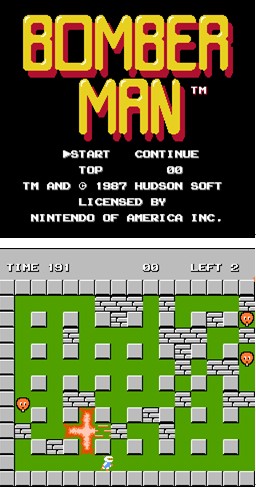
| Online Judge | Online Exercise | Online Teaching | Online Contests | Exercise Author |
|
F.A.Q Hand In Hand Online Acmers |
Best Coder beta VIP | STD Contests DIY | Web-DIY beta |
Bomberman - Just Search!
Time Limit: 2000/1000 MS (Java/Others) Memory Limit: 65536/32768 K (Java/Others)Total Submission(s): 825 Accepted Submission(s): 470
Problem Description
Bomberman has been a very popular game ever since it was released. As you can see above, the game is played in an N*M rectangular room. Bomberman can go around the room and place bombs. Bombs explode in 4 directions with radius r. To finish a stage, bomberman has to defeat all the foes with his bombs and find an exit behind one of the walls.
Since time is limited, bomberman has to do this job quite efficiently. Now he has successfully defeated all the foes, and is searching for the exit. It's really troublesome to destroy the walls one by one, so he's asking for your help to calculate the minimal number of bombs he has to place in order to destroy all the walls, thus he can surely find the exit.

Since time is limited, bomberman has to do this job quite efficiently. Now he has successfully defeated all the foes, and is searching for the exit. It's really troublesome to destroy the walls one by one, so he's asking for your help to calculate the minimal number of bombs he has to place in order to destroy all the walls, thus he can surely find the exit.

Input
The input contains several cases. Each case begins with two integers: N and M(4 <= N, M <= 15). N lines follow, each contains M characters, describing the room. A '*' means a concrete wall which can never be destroyed, a '#' is an ordinary wall that can be destroyed by a single bomb, a '.' is an empty space where bombs can only be placed. There're at most 30 ordinary walls. The borders of the room is always surrounded by concrete walls, as you can see from the samples. You may assume that the explosion radius r is infinite, so that an explosion can reach as far as possible until it meets a wall and destroys it if it's an ordinary one. Proceed until the end of file.
Output
For each case, output the minimal number of bombs that should be placed to destroy all the ordinary walls. Note that two bombs can't be placed at the same position and all bombs explode simultaneously, which makes the result for the second sample to be 3 instead of 2. You may assume that there's always a solution.
Sample Input
9 11 *********** *#.#...#.#* *.*.*.*.*.* *.........* *.*.*.*.*.* *....#....* *.*.*.*.*.* *....#....* *********** 3 13 ************* *..##...##..* *************
Sample Output
3 3
Source
| Home | Top |
Hangzhou Dianzi University Online Judge 3.0 Copyright © 2005-2025 HDU ACM Team. All Rights Reserved. Designer & Developer : Wang Rongtao LinLe GaoJie GanLu Total 0.000000(s) query 1, Server time : 2025-03-31 19:42:13, Gzip enabled |
Administration |